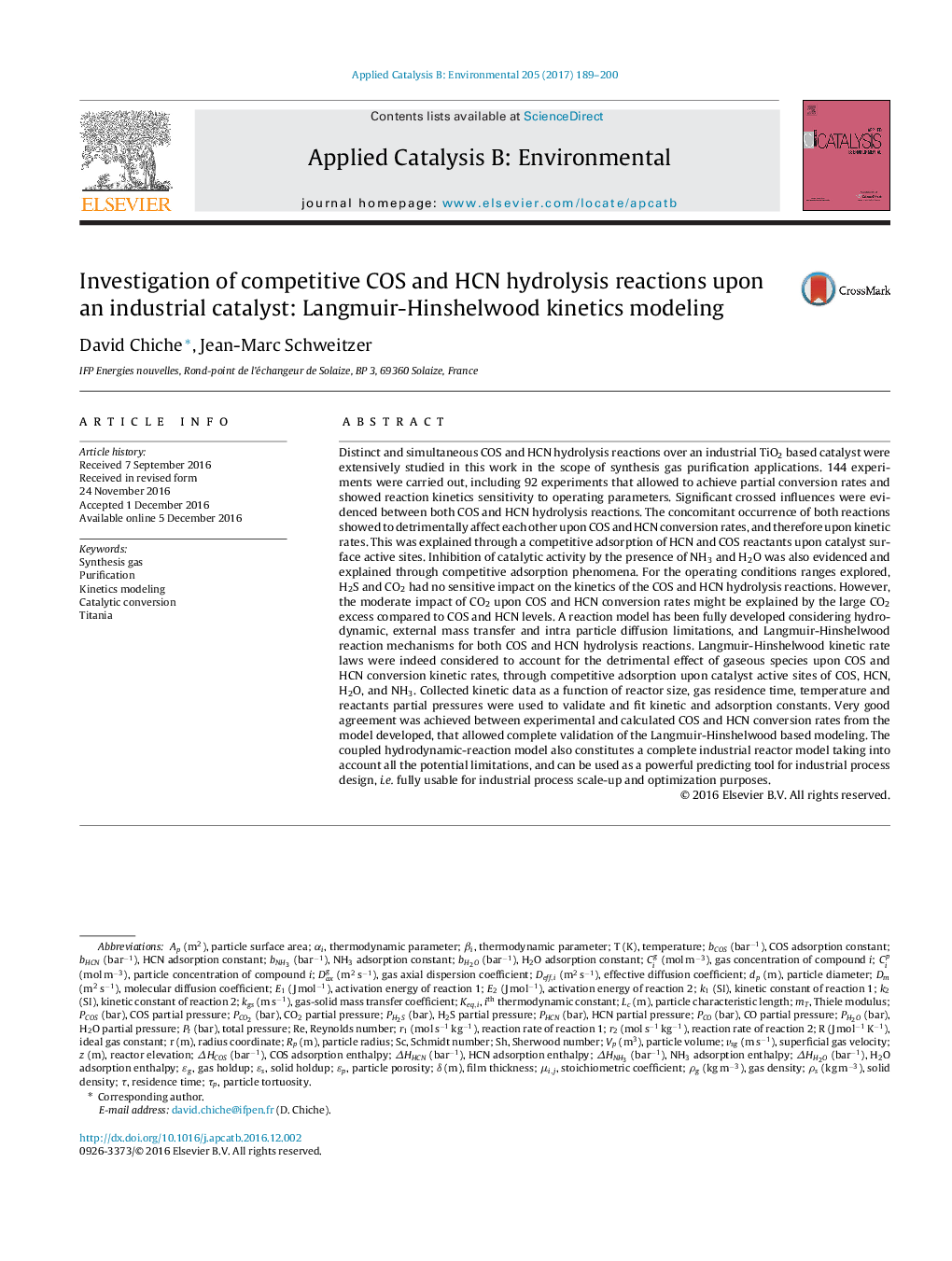| Article ID | Journal | Published Year | Pages | File Type |
|---|---|---|---|---|
| 6454304 | Applied Catalysis B: Environmental | 2017 | 12 Pages |
â¢Complete kinetic modeling of COS and HCN hydrolysis reactions was performed.â¢Full experimental study of T, GHSV, grain size, gas composition impact was achieved.â¢HCN, COS, H2O and NH3 competitive adsorptions were evidenced and considered.â¢The kinetic model has been implemented in a complete gas-solid reactor model.â¢This model can be used as a powerful predicting tool for industrial process design.
Distinct and simultaneous COS and HCN hydrolysis reactions over an industrial TiO2 based catalyst were extensively studied in this work in the scope of synthesis gas purification applications. 144 experiments were carried out, including 92 experiments that allowed to achieve partial conversion rates and showed reaction kinetics sensitivity to operating parameters. Significant crossed influences were evidenced between both COS and HCN hydrolysis reactions. The concomitant occurrence of both reactions showed to detrimentally affect each other upon COS and HCN conversion rates, and therefore upon kinetic rates. This was explained through a competitive adsorption of HCN and COS reactants upon catalyst surface active sites. Inhibition of catalytic activity by the presence of NH3 and H2O was also evidenced and explained through competitive adsorption phenomena. For the operating conditions ranges explored, H2S and CO2 had no sensitive impact on the kinetics of the COS and HCN hydrolysis reactions. However, the moderate impact of CO2 upon COS and HCN conversion rates might be explained by the large CO2 excess compared to COS and HCN levels. A reaction model has been fully developed considering hydrodynamic, external mass transfer and intra particle diffusion limitations, and Langmuir-Hinshelwood reaction mechanisms for both COS and HCN hydrolysis reactions. Langmuir-Hinshelwood kinetic rate laws were indeed considered to account for the detrimental effect of gaseous species upon COS and HCN conversion kinetic rates, through competitive adsorption upon catalyst active sites of COS, HCN, H2O, and NH3. Collected kinetic data as a function of reactor size, gas residence time, temperature and reactants partial pressures were used to validate and fit kinetic and adsorption constants. Very good agreement was achieved between experimental and calculated COS and HCN conversion rates from the model developed, that allowed complete validation of the Langmuir-Hinshelwood based modeling. The coupled hydrodynamic-reaction model also constitutes a complete industrial reactor model taking into account all the potential limitations, and can be used as a powerful predicting tool for industrial process design, i.e. fully usable for industrial process scale-up and optimization purposes.
Graphical abstractDownload high-res image (149KB)Download full-size image
